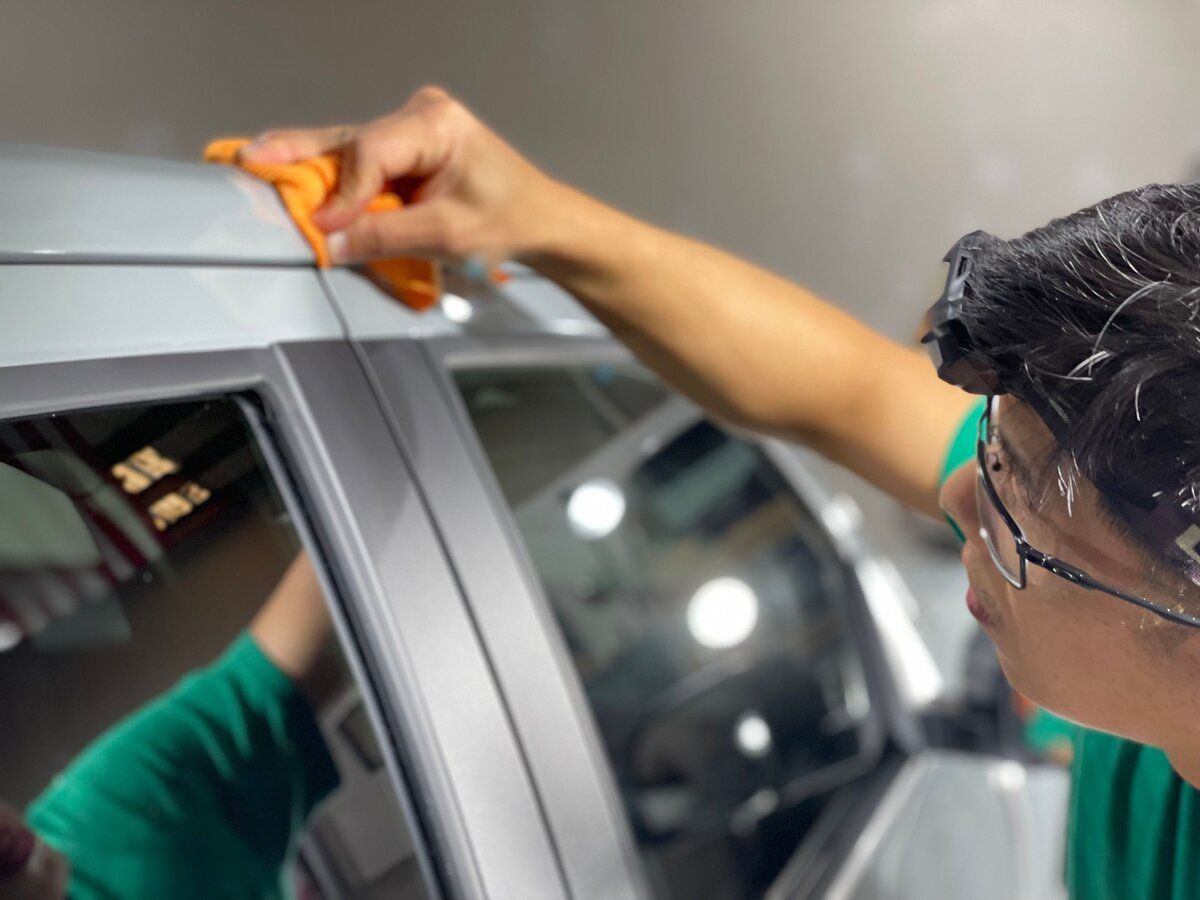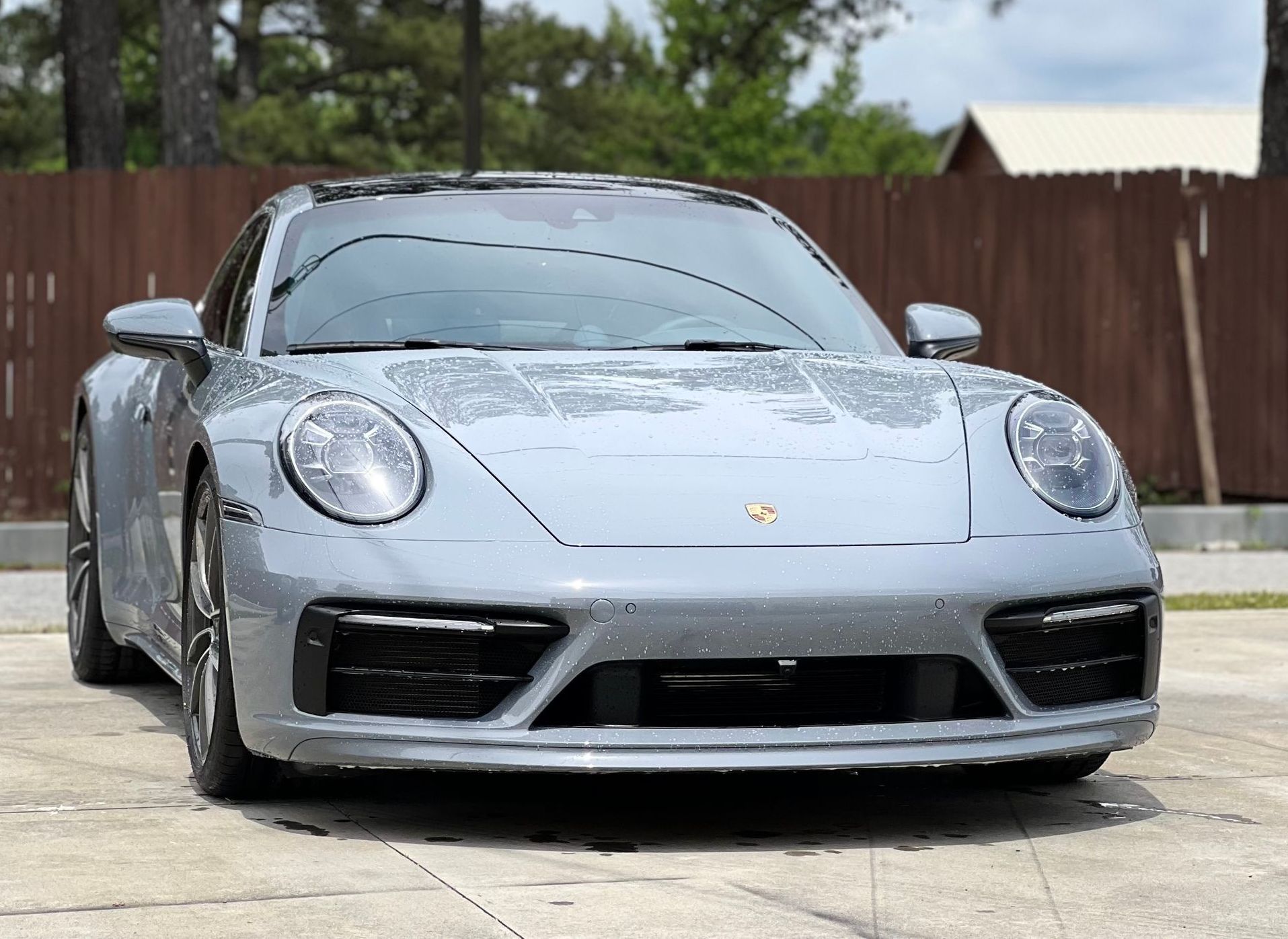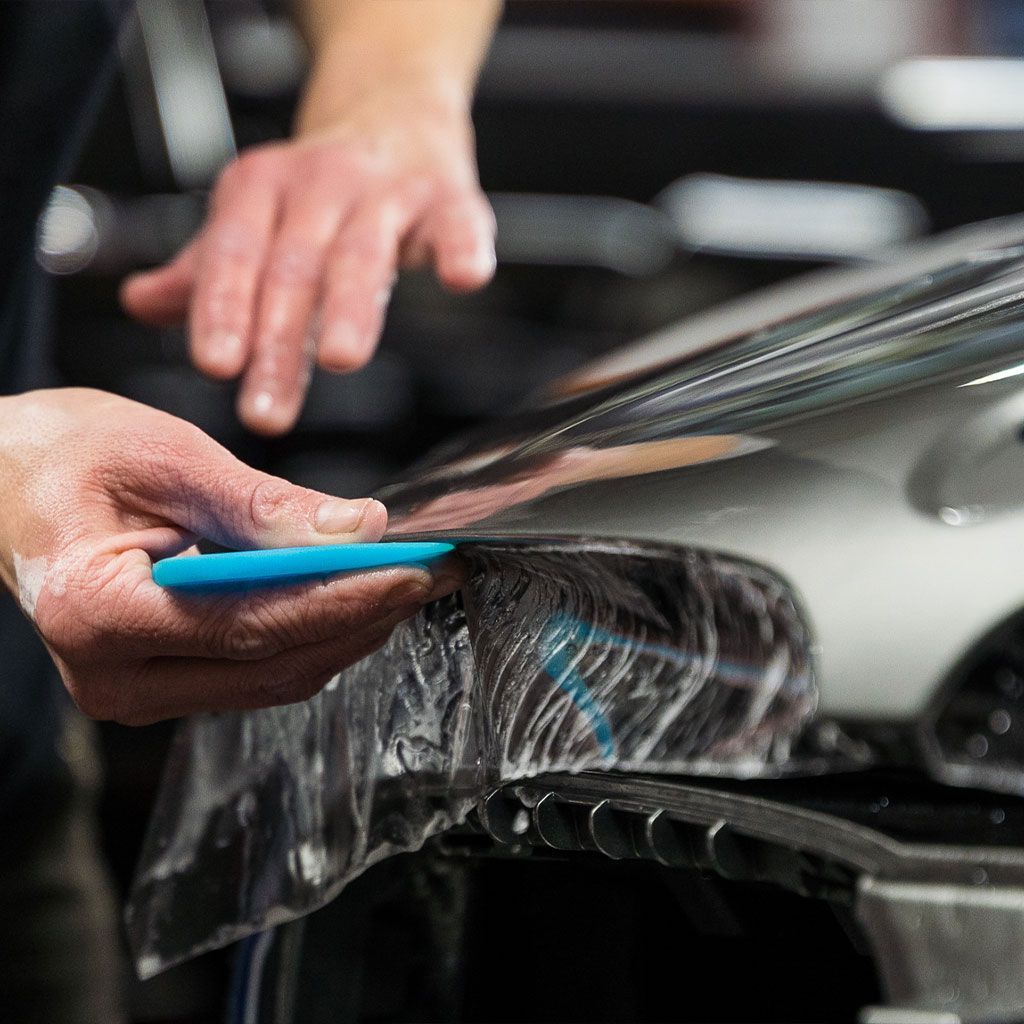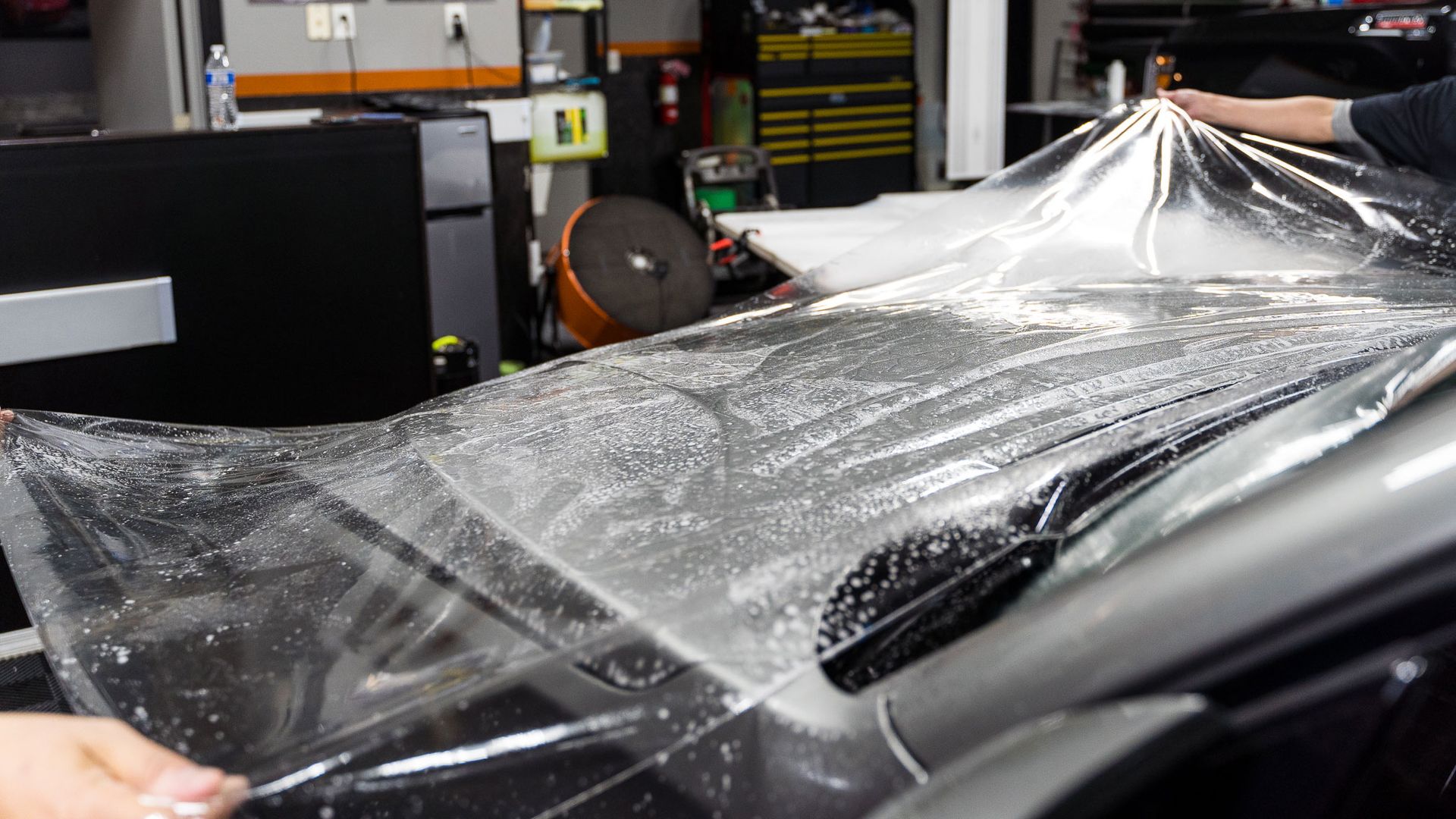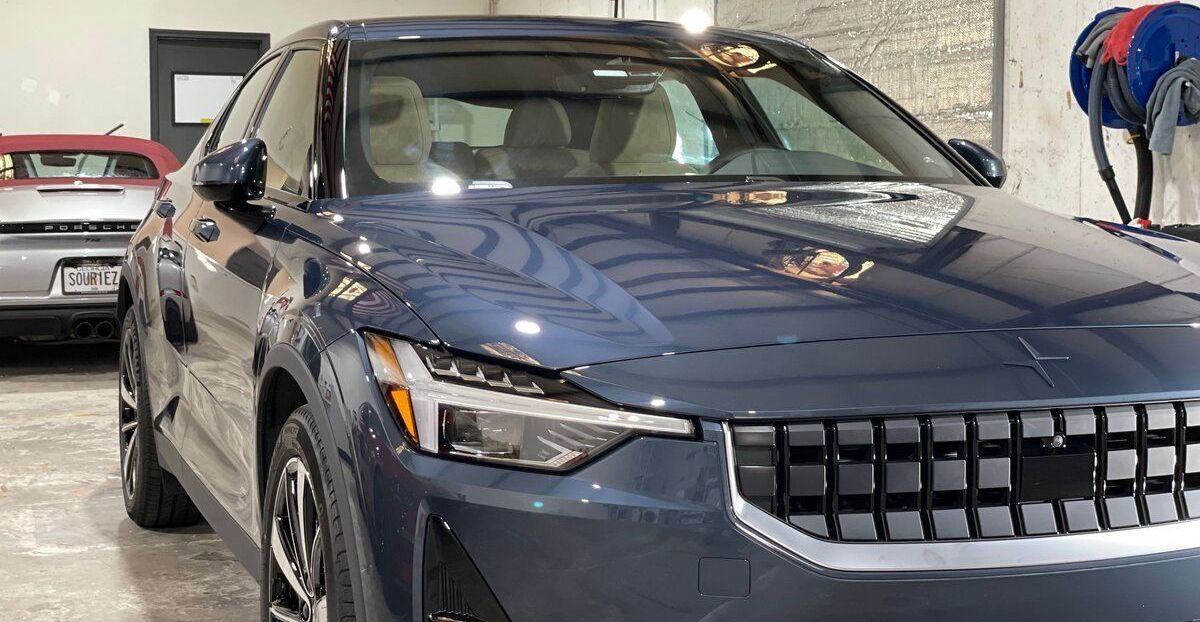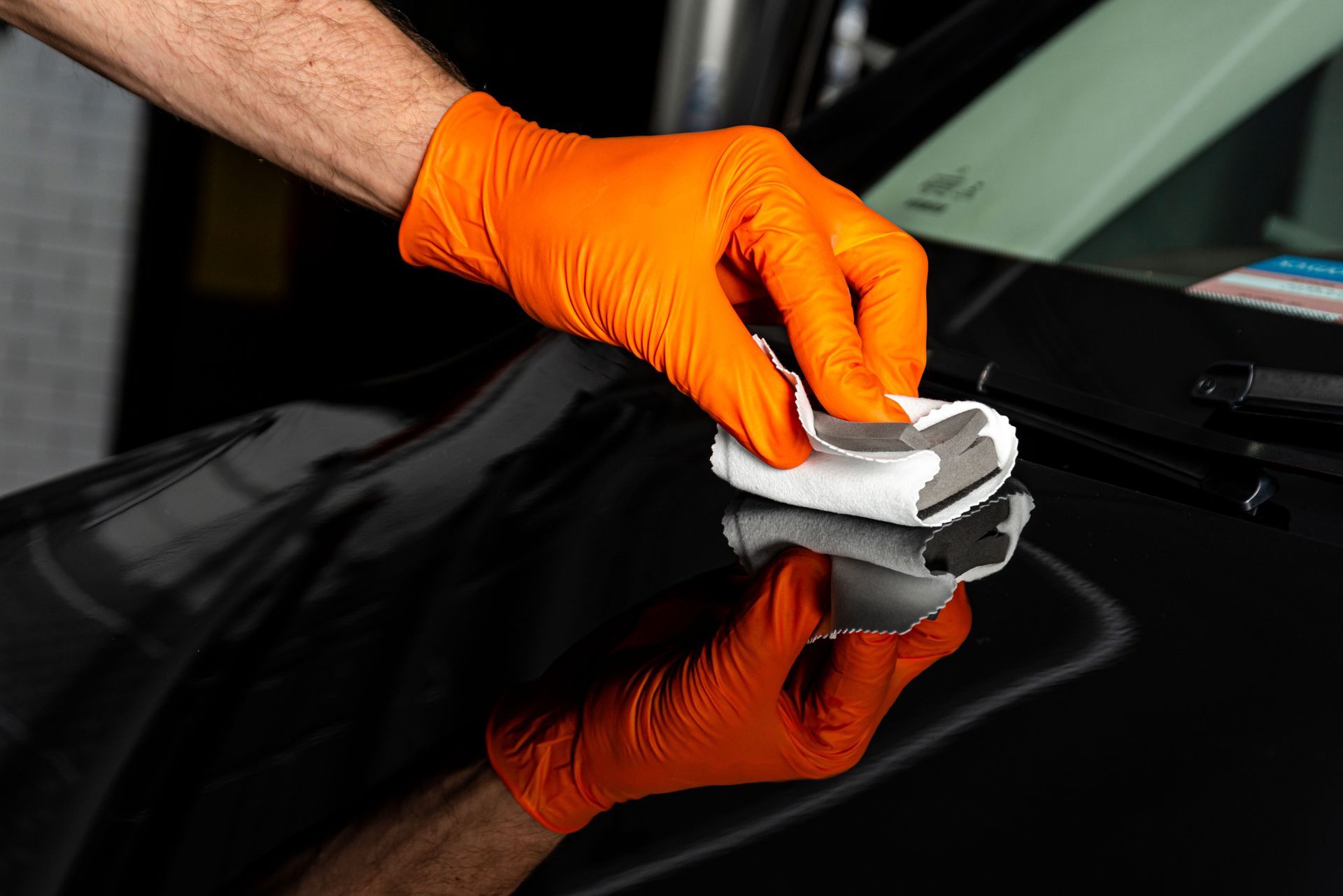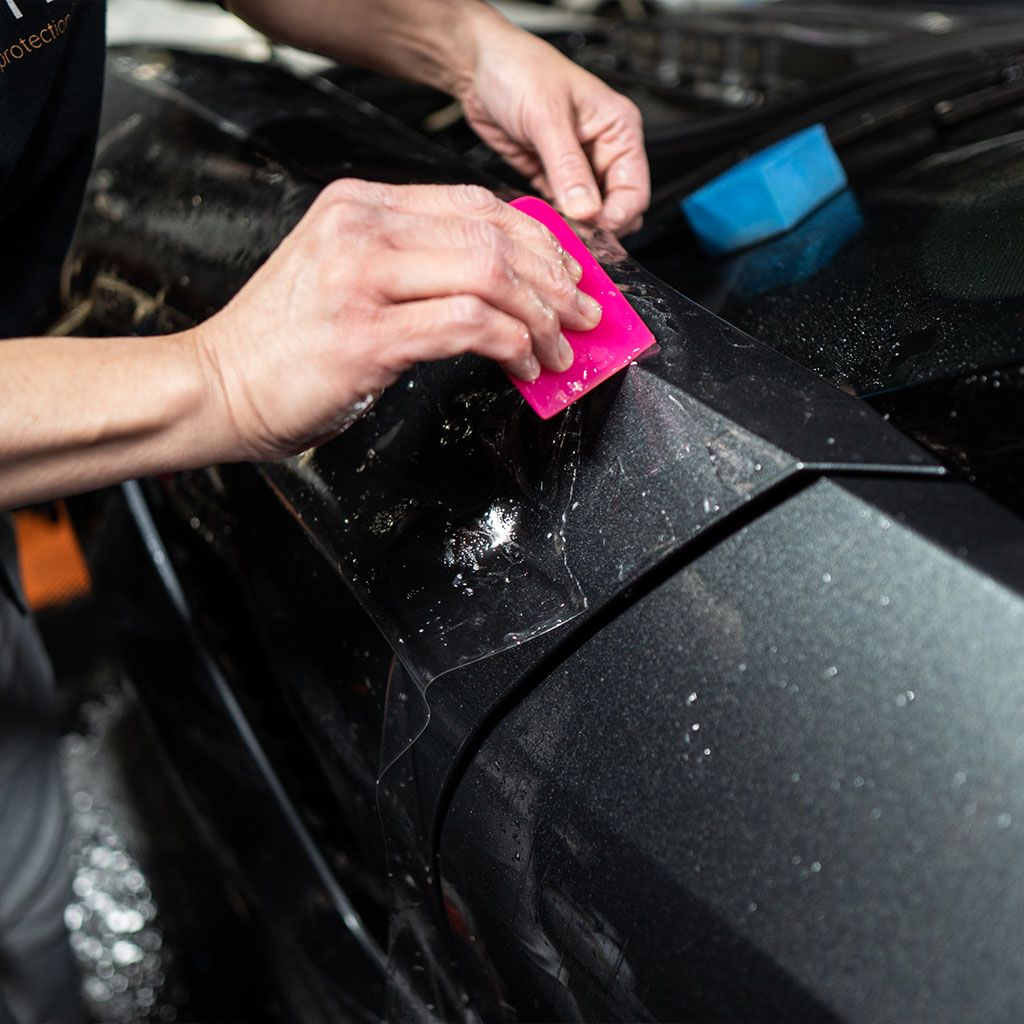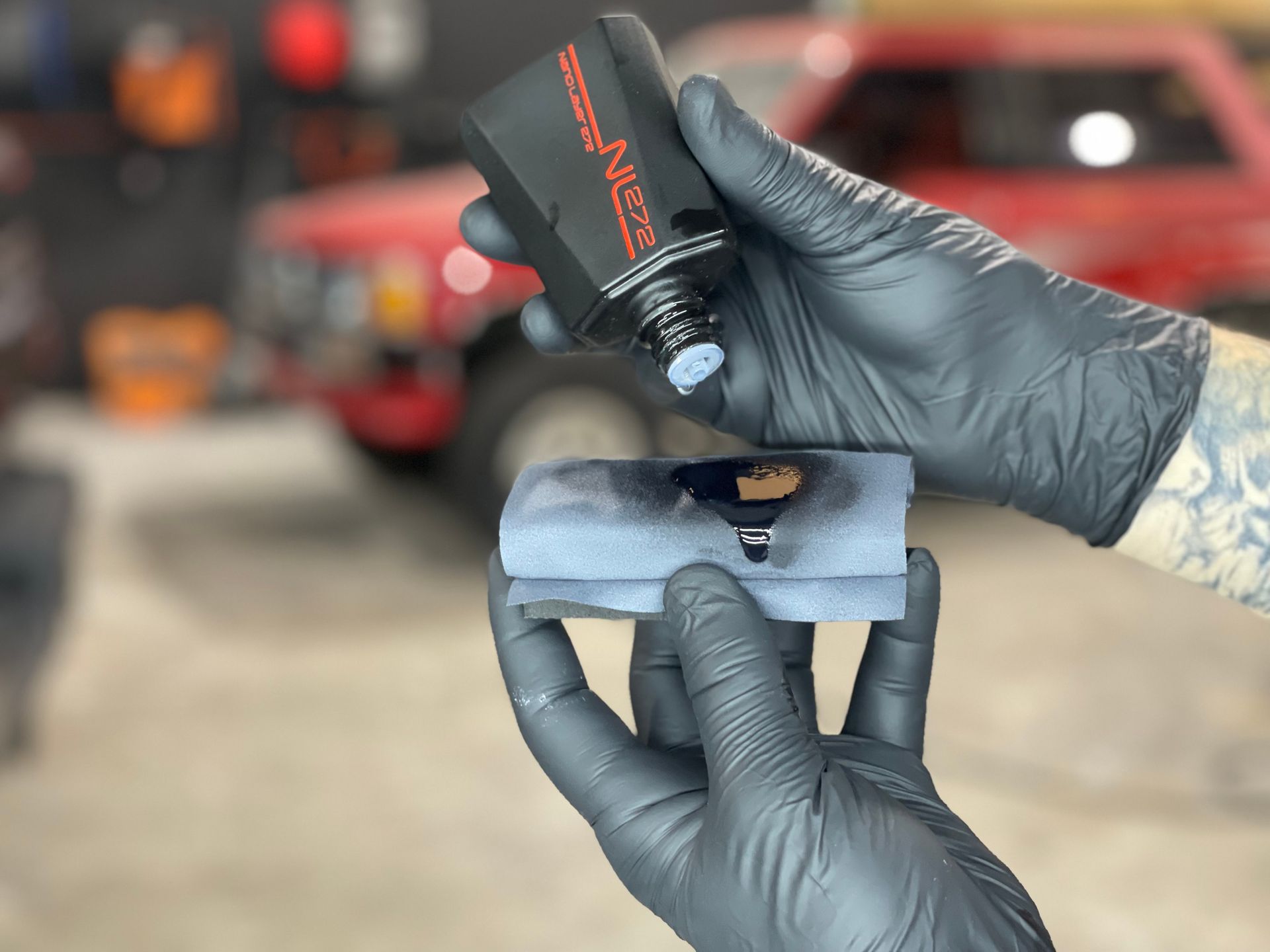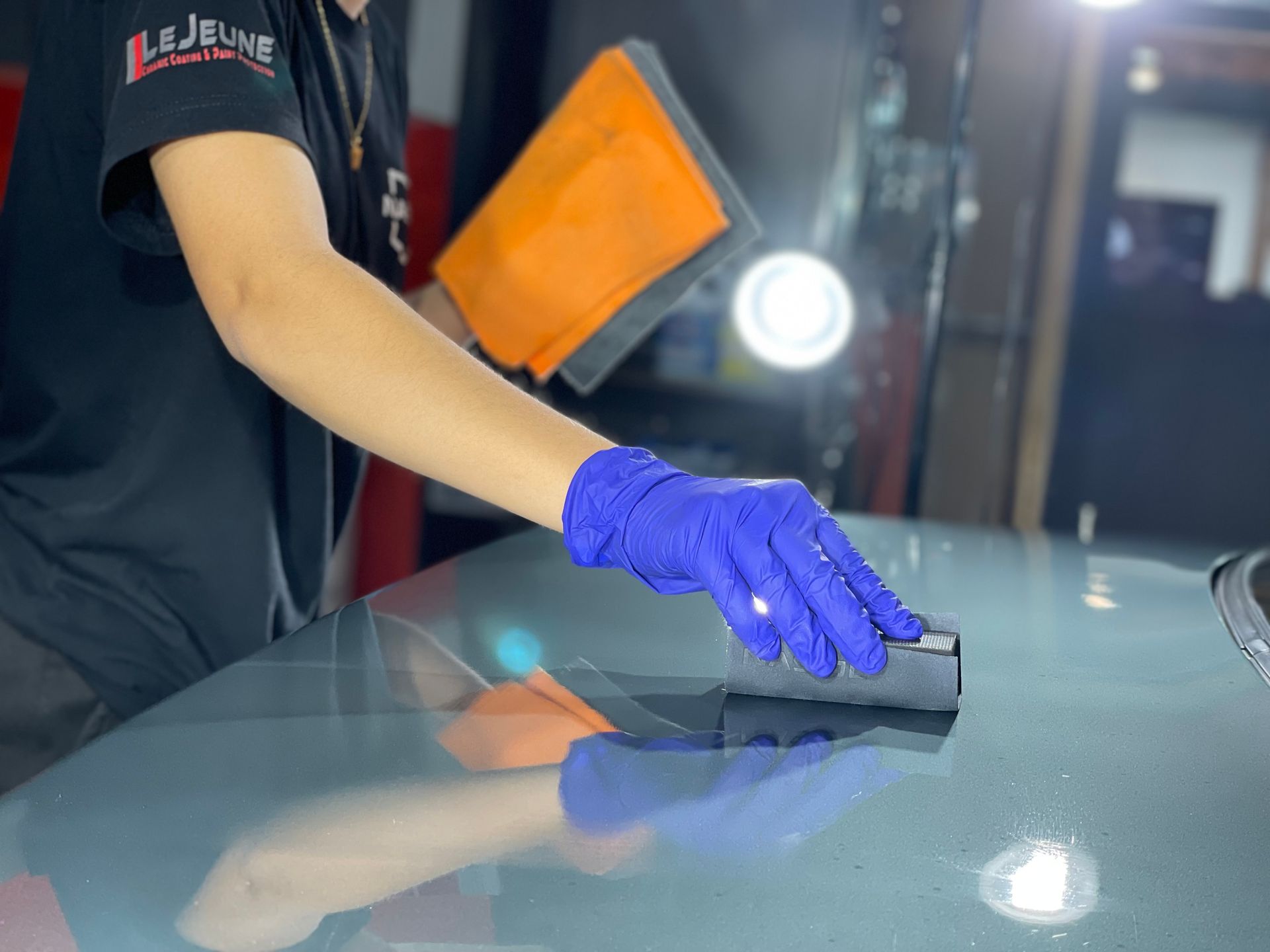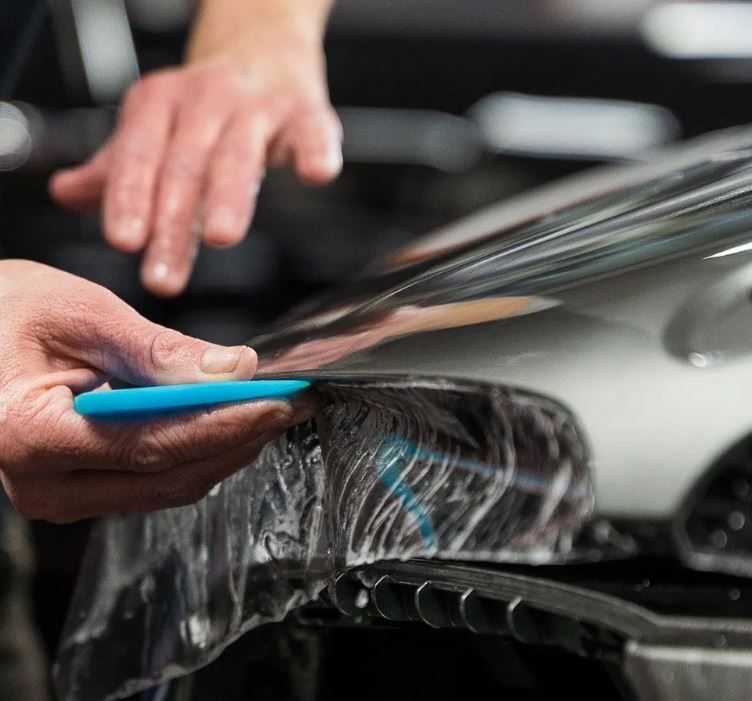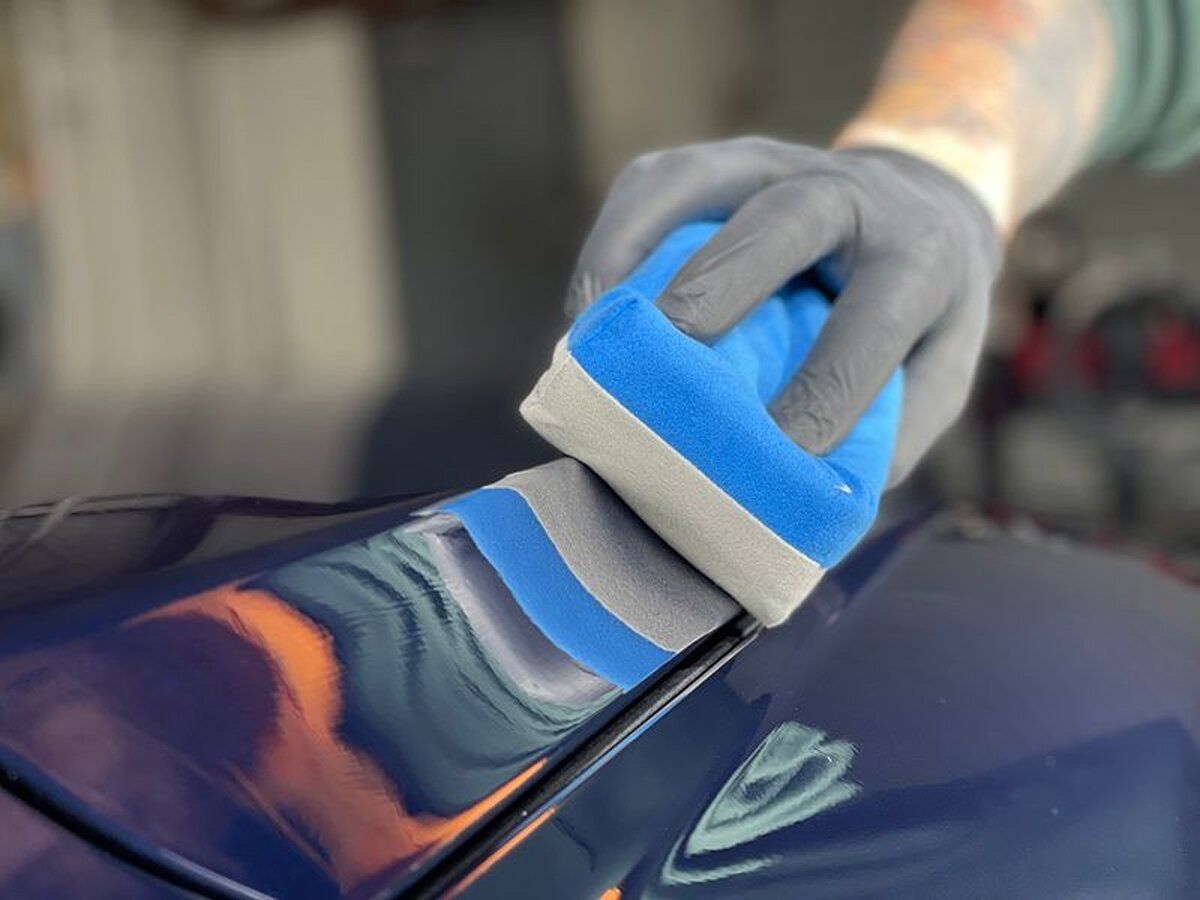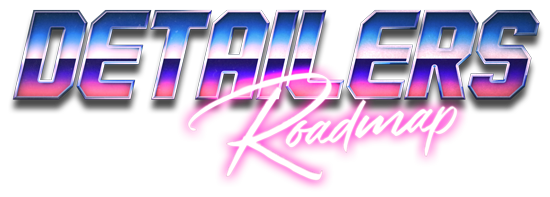How to Recognize PPF Yellowing and the Causes Behind It
GET A QUOTECALL (770) 722-3486
If you love keeping your car in pristine condition, nothing is more frustrating than discovering your paint protection film (PPF) starting to turn yellow. Much like spotting a hairline crack on a newly polished windshield, it's a tiny detail that disrupts the overall sleek appearance of your vehicle. But why does this happen, and how can you catch it early? Here is a comprehensive guide to help you identify the early signs of paint protection film yellowing.
You can recognize paint protection film yellowing by observing a noticeable change in the film's color, often appearing more amber or cloudy than its original clear state. Common causes of this yellowing include prolonged exposure to UV rays from sunlight, harsh cleaning chemicals, and environmental factors such as heat and humidity that contribute to the degradation of the film material.
Signs of PPF Yellowing
Detecting yellowing in paint protection film can be a bit like watching paint dry; it often sneaks up on you. The first indication typically comes in the form of subtle changes in hue. Over time, a paint protection film may transition from its original clear state to a slight amber tint, which can be alarming, especially if you’ve invested significantly in your vehicle’s appearance.
Visual Inspection Techniques
To begin, engage in a thorough visual inspection by adjusting your stance and perspective. Standing at different angles with varying light sources can illuminate hidden imperfections. Sunlight is particularly useful, as it casts light directly onto surfaces, revealing even the faintest discoloration. Look for patches that deviate from the once pristine clarity—these early signs of yellowing often appear as small amber spots or an overall dullness across the film. These changes are significant because they indicate that the protective layer is losing its transparency and effectiveness. To enhance your observations, consider comparing untreated areas. Additionally, make it a habit to compare the affected paint protection film with areas on your vehicle that have received less sun exposure, such as sections covered by other materials or those shielded by brackets and features. This visual contrast can provide a stark realization of how much UV exposure contributes to yellowing. When visible differences are noted, it’s a signal that your paint protection film may require attention.
Use of Photos for Comparison
Another effective technique involves documenting your vehicle's condition over time through regular photography. Taking periodic photos under consistent lighting conditions allows you to track potential changes accurately. This simple practice provides an ongoing visual record that can reveal gradual shifts in color that might not be apparent during day-to-day use. Many car enthusiasts find success capturing close-up images of their vehicle’s paint protection film every six months. By closely examining these photographs against previous snapshots, they can pinpoint evolving issues more effectively than relying solely on memory or casual observation. This documentation method not only helps identify yellowing early but also serves as an excellent reference point when discussing maintenance or replacement options with professionals.
Recognizing Discoloration and Fading
While yellowing is a common concern, it’s essential to explore other forms of discoloration, such as fading or whitening. The nuances of these changes can provide valuable insight into the film's health and longevity. An aged paint protection film often exhibits characteristics distinct from a newly installed one, making comparison straightforward yet crucial.
- Comparing Aged vs. New PPF: When you observe older paint protection film alongside newly installed sections, the differences become quite clear. Fading tends to manifest as a general dullness; instead of the bright sheen that characterizes fresh film, the older areas seem muted and lackluster. This degradation can be likened to an old photograph losing its vibrancy over time, where colors fade and details blur. Just as you might reminisce about the clarity and sharpness of an untouched image, a new piece of paint protection film stands out against an aging backdrop. This comparison highlights why being attentive to these changes is vital for maintaining your vehicle's aesthetic appeal.
- Analyzing Under Different Lighting: To gain a comprehensive understanding of your paint protection film’s condition, inspect it under various lighting conditions. Natural light illuminates imperfections effectively—broad daylight reveals nuances that may otherwise be missed indoors. Conversely, artificial lighting can highlight specific issues under certain angles or intensities. Utilizing a flashlight can help accentuate areas where fading may be especially prominent, enabling you to identify problem spots more easily. By actively examining the film from multiple perspectives, you empower yourself with knowledge informing future decisions regarding maintenance or replacement.
The question sometimes arises whether fading is worse than yellowing. Both conditions impact the overall appearance of paint protection film but pose different challenges and remedies. Yellowing suggests potential degradation due to UV exposure or chemical reactions, which could necessitate immediate attention to prevent further damage. On the other hand, fading might indicate ongoing wear that has not reached critical levels yet. Thus, while both issues merit consideration, understanding their implications allows for targeted care and strategic planning concerning your vehicle’s protection needs.
Common Causes of Yellowing
One primary reason for yellowing is environmental factors. Imagine living in an area with heavy traffic or nearby factories. The pollutants from car exhaust fumes and industrial emissions can unexpectedly react with the components of the paint protection film. A common observation among users residing in urban settings is that they report accelerated yellowing compared to those in rural or less polluted environments. This interaction highlights the impact that our surroundings can have on materials designed to protect our vehicles. To illustrate, think of your paint protectin film as a protective barrier that, when fully exposed to harmful elements without regular maintenance, begins to wear down just like anything else left unchecked.
Another significant factor contributing to yellowing is the chemical interaction between paint protection film and various cleaning agents. Many homeowners may be unaware that using certain cleaning products can hasten the aging process of their paint protection film. Acidic or high-alkaline cleaners often contain harsh chemicals that can degrade the film's material over time, resulting in unpleasant yellowing. For instance, cleaners with high pH levels might strip away essential protective elements from paint protection film, leaving it vulnerable to discoloration. In contrast, opting for pH-neutral cleaners can help mitigate such risks while maintaining your vehicle’s aesthetic appeal.
Preventive measures can dramatically enhance the durability of your PPF and combat yellowing effectively. By making informed choices about the environment you park your car in and the products you use to clean it, you'll not only preserve the visual integrity of your vehicle but also extend the lifespan of the protection film itself.
Impact of Ultraviolet Light
Ultraviolet (UV) light might seem like an abstract concept, but its consequences on paint protection film are very real and tangible. It’s fascinating to discover how something we often overlook—sunlight—can gradually impact the clarity and integrity of this protective film. You might not realize that just as it can fade the paint on your car, UV light simultaneously works on breaking down the polymer structures that make up PPF.
Continuous exposure to UV rays weakens the chemical bonds within the paint protection film material, resulting in that puzzling yellowish hue many vehicle owners dread. Research has shown that paint protection film can yellow up to 40% faster when subjected to intense sunlight versus being kept in shaded areas. This rapid degradation occurs because UV rays penetrate the film and induce a change in color through photodegradation, which alters the physical properties of the film itself. A clear film slowly transforms into one that detracts from the appearance of your vehicle. Given these impacts, it's vital to consider preventive measures.
Shielding Measures
Thankfully, there are several strategies to mitigate UV exposure and protect your paint protection film. One effective approach is utilizing UV-blocking automotive covers designed specifically for this purpose; however, it’s important to understand they aren't foolproof solutions. These products can significantly reduce the intensity of harmful rays but may not eliminate them entirely. Thus, integrating additional protective measures helps safeguard your investment. For instance, actively seeking shaded parking whenever possible can dramatically lessen your vehicle's UV exposure during peak sunlight hours. This simple habit can serve as a powerful tool against premature yellowing of your paint protection film while maintaining the sharp aesthetic of your automobile. Additionally, considering other choices like using reflective car covers or investing in garages or carports can bolster protection against UV rays and environmental factors.
Staying informed and taking proactive steps will not only maintain your vehicle’s appearance but can also prolong its life by preserving the benefits provided by paint protection film.
Layer Deterioration Factors
Several elements contribute significantly to the deterioration of paint protection film, influencing its tendency to yellow over time. One major aspect is the quality of the paint protection film material itself. The materials used in manufacturing PPF can vary widely. Lower-quality films generally have compromised UV resistance, which greatly accelerates the yellowing process. Investing in premium brands can save you from future headaches. These brands utilize advanced formulations designed to hold up against harsh environmental factors much longer than their budget counterparts.
This leads us directly into how environmental wear and tear comes into play. The daily exposure of your vehicle's paint protection film to road debris, relentless washing, and fluctuating weather conditions can erode these protective layers over time. Think of it as skin exposed to the elements; without regular upkeep, even the strongest materials begin to show signs of damage. Maintaining a regular cleaning schedule not only keeps your vehicle looking pristine but also helps slow down the degradation of the film itself.
Low-grade paint protection film could start deteriorating within just three years, while high-quality paint protection film films often last over five years if properly maintained. Hence, it's advisable to regularly inspect and care for your paint protection film; such routines can significantly prolong its service life and maintain its clarity. A bit of preventive maintenance goes a long way in retaining both the appearance and protective functions of your investment.
Understanding the interplay between product quality and environmental impact fosters a mindset geared toward proactive protection measures. Your choices—regarding which paint protection film to install or how you maintain it—greatly influence its long-term performance and appearance.
Preventive Measures and Solutions
Preventing yellowing is a strategic endeavor that can save you a lot of trouble down the line. One effective approach is the application of ceramic coating specifically designed to enhance UV resistance. By incorporating these ceramic coatings on top of your paint protection film, you're essentially adding an extra shield against harmful rays. This not only enhances UV protection but also extends the lifespan of your paint protection film so that you enjoy its benefits for years to come.
Equally significant in your prevention strategy is establishing a regular cleaning routine. It's important to choose pH-neutral cleaners, as they are gentle and won’t harm the paint protection film's surface. Pressure washers may seem like a quick fix, but they can actually cause real damage to the film. Picture this: each time you wash your vehicle with pressure, contaminants can get lodged into tiny crevices that lead to deterioration over time. Incorporating gentle washing techniques ensures that you're removing potential pollutants without compromising your film's integrity. Regular cleaning not only removes dirt but also prevents any harmful residues that might settle on the film.
Lastly, consider parking your vehicle in shaded areas whenever possible. While it may seem simple, minimizing direct sunlight exposure significantly reduces UV damage over time. Even those few extra hours of shade can make a noticeable difference in how well your paint protection film retains its clarity. By implementing these preventive measures diligently, you'll be well on your way to preserving both the functionality and aesthetic appeal of your paint protection film, ensuring it serves you faithfully for years to come.
Consistent care and proper protective measures can greatly extend the life of your paint protection film while keeping it looking like new.
Premier Paint Protection Film Services in Marietta, GA
Protect your vehicle with LeJeune Ceramic Coating & Paint Protection’s premier paint protection film services in Marietta, GA. Our high-quality paint protection film shields your car from road debris, scratches, and environmental damage, preserving its flawless finish for years. Trust our expert team to provide a custom fit and seamless installation that enhances durability while maintaining your car’s original beauty. Contact us today to learn how our PPF services can give your vehicle the protection it deserves! Call us at (770) 722-3486 to get started!
